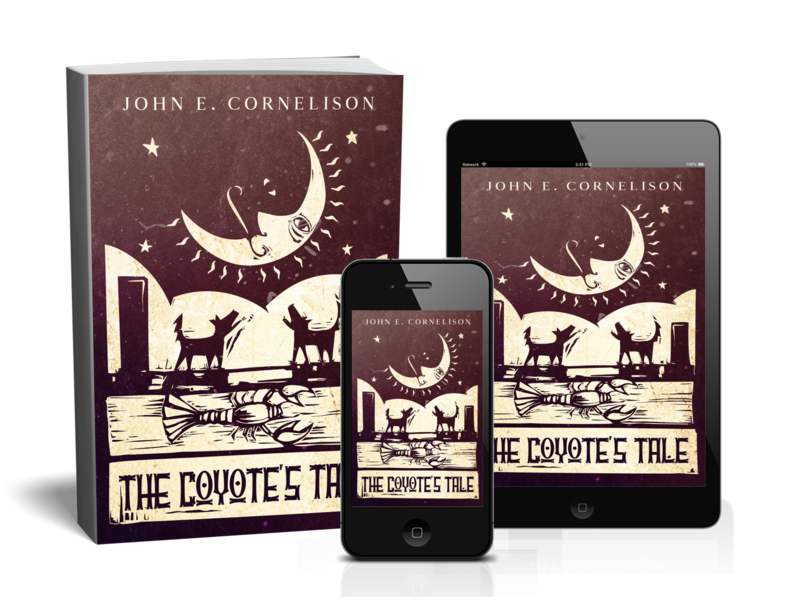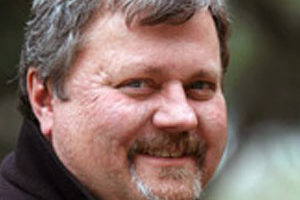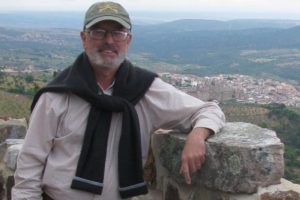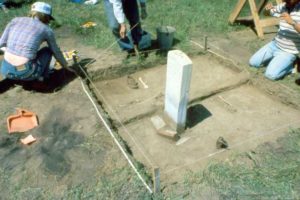I am very excited to announce that Archaeologist Dr. Julie M. Schablitsky is the first archaeologist to be interviewed for the Archaeology and the Movies Series. Dr. Schablitsky is the Chief archeologist at the Maryland Department of Transportation, a professor at the University of Oregon and the University of Maryland, and a prolific author having written about archaeology and the movies. Her books include:
Box Office Archaeology: Refining Hollywood’s Portrayals of the Past – Archaeologist Dr. Julie M. Schablitsky
Archaeology of the War of 1812 – Archaeologist Dr. Julie M. Schablitsky
See more Archaeology and the Movies
Transcript – Archaeologist Dr. Julie M. Schablitsky
John – 00:16 – I’m very excited to have Dr. Julie M. Schablitsky here today. She’s the chief archaeologist at the Maryland Department of Transportation. She’s a professor at two universities and she’s written several books including Archaeology of the War of 1812 and Box Office Archaeology: Refining Hollywood’s Portrayal of the Past. And here we go with our interview. I want to thank you for coming here today. Really appreciate it. And we’re going to talk about archaeology and movies, something that’s very important to both of us and as I’m also an archaeologist and a big movie fan and I think you are too. So could you start by just telling me a little bit about your archaeological background, which is really extensive.
Julie – 01:00 – Yeah. I have been doing archaeology for over 30 years and my undergraduate and graduate work was in Minnesota and then later in Oregon. So I moved from the Midwest where I did a lot of archaeology in the National Park Service as an archaeological technician. And then I did my Master’s degree and Ph.D. out in Oregon out that direction. And so all throughout school, while I was wearing to school, I was working for any of the National Park Service, the US Forest Service, and even a CRM firms, so I worked all over the place and then once I graduated with my doctorate I went ahead and took a position with our Oregon Department of transportation as their other archaeologists. So that’s where I was for a while. And then about 12 years ago I went east and took a position, here in Maryland at the department transportation. So I had been leading their cultural resources program since then, but I also have academic positions at the University of Oregon as well at the University of Maryland where I do research and work with graduate students.
John – 02:15 – Okay. So, in Oregon is where you started working with the boom towns?
Julie – 02:19 – Yeah. So Oregon is kind of where the wild west archaeology a work started. So I had a lot of fun looking and exploring industrial archaeology sites, anything from logging camps in mining camps. And that’s when it came. When it came time to choose my dissertation for my Ph.D., that’s how I arrived upon the idea of doing something in a town like Virginia City, Nevada.
John – 02:45 – Okay. That led you eventually to “Bonanza” 1959-1973?
Julie – 02:52 – Yeah. So “Bonanza” 1959-1973 was before my time, but everybody kind of knew about it and when you go back and look at some of the old programs, you realize how simple the sets were, how basic the clothing was and how everybody was very, very white except for Hop Sing the kind of token Chinese man who represented the diversity at the time.
John – 03:18 – They always wore the same color clothes to keep it simple and everything. Yes. So go ahead.
Julie – 03:26 – So back then, unlike today where you have a more educated audience, back 50, 60, 70 years ago, people weren’t. I don’t think, as educated about how people dressed back then, what would have been appropriate for street scenes, even the types of bottles and cups, dining rooms would’ve been set with that sort of, those sorts of details never looked into are really worried about by the production team because again, you have to worry about what you can get away with, with your audience and that was an easy thing not to worry about it.
John – 04:00 – Right? And then I think we’ll get back to that in a little more, but how that, how those details can lead to a better film product or a better movie product. And so let’s just jump right into that. I’m looking at the questions over here that, how did you first start applying this to a film, to movies? Your idea that about the, that led to the book, I guess is what I’m asking. How did it, how did your idea, kind of coalesce for the book
Julie – 04:33 – As an archaeologist, I am very much tuned into material culture, and as an historical archaeologist, I recognize things and movie sets, table settings I think is a perfect example or in the background a lamp, the clothing, these sorts of things that, communicate to me a historical story in my archaeological science is something I can see in these movie sets. Because as an archaeologist, when you, when you pick up a ceramic sherd for example, you’re not just seeing, you know, a broken thing. You’re seeing the entire cup or when you see a bottle lip, you’re not seeing just the bottle lip you’re seeing the entire bottle. So then as an archaeologist and get back on my couch watching a movie or television, I’m always looking at what people are doing with those items in historical scenes and documentaries. And I began to notice that there’s discrepancy there.
Julie – 05:32 – But to me, I think what the more important takeaway is, it’s not just about the stuff or the material culture, but it’s, then it becomes about the people, right? We’re anthropologist and I began to then kind of not worry about how the table is set, if that’s the right transfer-print or if they’re using the right color bottle glass. I began to think about, well, who’s on that set? How are the scenes being portrayed? I think a great is if you look at any street scenes of “Bonanza” 1959-1973, you’ll see a bunch of dudes running around and there were no children and there’s very few women. And we know when we think about a busy street scene, there should be all sorts of people, shapes, sizes, ages on the street to really communicate community.
John – 06:18 – Right.
Julie – 06:18 – And so that’s, I think the first use in any wild west film is that you just see that absence of diversity and sex and age and race.
John – 06:29 – Okay. So, just jump in as an aside, you’re aware that Ben, I think had three wives and killed them all off on birth. And then Joe, that’s what ended the show is when little Joe’s fifth fiance or something died because they were really good about killing off the women instantly in that show. So you put together a really a great bunch of people, Charlie Haecker and some of the other Charlie Ewen, Russ Skowronek, some of the underwater pirate guys. And how did you assemble such a good group?
Julie – 07:06 – Well, the authors came together as, as a session in the Society for Historical Archaeology one of their conferences. So, whenever you do an edited volume, that’s kind of where you start, but it doesn’t need to be where you end. A lot of times you can add people to that edited volume or you can take some away if it doesn’t make sense. And what I was really striving for was a compilation of different types of sites, underwater sites. I wanted to also look at terrestrial sites. I want to look at the west, I want to look at the east and I didn’t necessarily need to even stick in the United States. So that’s why we have some of the Viking. We have a Viking chapter in there to look at something else besides just American archaeology, so I was really trying to grab a group of people from diverse backgrounds which have different perspectives about how they see and digest and process what they see on the television and how they reckoned that with their own work in archaeology.
John – 08:06 – Well, this may seem like a simple question to you, but you can help clarify to us old men. Why is it so important that the community that you see visually reflects reality and what is it? Does it, how does it help our modern society? But seeing a realistic depiction.
Julie – 08:28 – I think that human beings in general are very visual and I think that when you see something on television, even though you might be watching like a drama play out or a conversation happen or some action, you’re also picking up different visual cues and familiar, becoming familiar with what is happening in front of you. For example, getting back to the wild west. If you have a conversation happening about like say a mine mining site and you have people talking and it’s just, you know, two white guys, that’s one thing, but if you see, for example, a conversation that includes someone that’s Chinese or of African descent, you’re actually having a more real conversation that’s reflective of how things went down in the past. So I’m. Virginia City is a great example of where you had a very diverse global community. You had people there that were African American that were immigrants and migrants from, from Boston, Massachusetts. You had Chinese coming from the, from overseas, you had people from Jamaica, you had people from Germany, Ireland, England. So you have this really diverse group of people that come together. And that’s really what these mining communities were. And that’s really who we were and are today. And I think when you look back at the old films of 1950, 1960, 1970, you’re just not seeing that diversity for a couple of reasons. One, I think that you’re having people who are white producers, white executive director, creating these scenes. They’re trying to tell a story to their audience being white people and they’re not thinking about anyone else or anybody else that might not be them. So it’s almost like this single dialogue that’s happening,
John – 10:29 – Kind reinforces that this is white America, white Christian people, because it was just a Tarzan character taking care of everybody else’s problems, kind of like the great white father.
Julie – 10:46 – So even like you even think about, you’ve heard of this spaghetti westerns because it was always a big joke that these wild west, you know, instead of having, you know, native Americans, playing native Americans, you end up having these Italian people playing native Americans when there were plenty of native Americans out there who are probably willing and ready to take those acting jobs. Those were bypass opportunities were not given. Instead, you know, you have your Italians in there playing a role and playing a community that they knew nothing about.
John – 11:20 – John Ford, I guess he used the Navajo when he was out in Monument Valley, but they were all in just background. They weren’t, you know, the main roles were all Caucasian actors that were in costume. So kind, Kinda the same thing. So what, what you did your War of 1812 book and there’s no good War of 1812 movies that maybe The Buccaneer (1958) with, I’m drawing a blank, Moses, NRA, Charlton Heston, Heston. So there’s no real, do you know of any War of 1812 movies or anything like that?
Julie – 12:03 – You know, I haven’t looked for them. I’m sure they exist out there in some way. I mean, War of 1812. That’s always been kind of deemed the forgotten war. It, it just doesn’t seem to resonate with the Americans and definitely not the British, about what happened over here because, you know, you hear about the revolution, American Revolution, Revolutionary War, of course, that’s, we know where we were able to take our freedom from you know, from Europe, Great Britain and we have it in the War of 1812 was almost like a reminder that, yeah, it’s still ours and we’re still fighting for it. And then you have, of course, the next war that you really have is going to, at least for that we kind of talk about and celebrate would be the American Civil War. The United States Civil War, so in that gets a lot of play.
Julie – 12:53 – I mean, there’s so much passion around the Civil War and I think to a lot of people it’s, it’s surprising. So, but I mean, why would you anywhere. I mean now that I live here on the east coast, in fact, I just was on location, Burkittsville in Maryland here where there was a Civil War battle and I went to the place where they had one of the encampments and it was a lookout and there is something magical about the Civil War. I don’t know what it is. I guess the idea that you have brother against brother that is being fought on U.S. soil. Um, but for whatever reason, getting back to the War of 1812, we just don’t, it’s just, it’s not one of those, um, those, those wars that really, I think captures people’s imaginations or resonates with them in any particular way.
John – 13:51 – That’s a great answer. I was just, I’m thinking of some questions that are just coming up and how do you feel about revisionist history like Abraham Lincoln, vampire slayer (Actual title Abraham Lincoln: Vampire Hunter (2012)), or “The Guns of the South” when they’re portrayed in movies and it’s got enough history in it to confuse people and then a lot of made up stuff.
Julie – 14:20 – Yeah. And was one of my favorite ones is like Drunk History is that when, when people, you know, they take comedians and they’d give him a lot like liquor about, but then they get to tell their own story about what history was like or what a story, what about, you know, the Abraham Lincoln assassination and how it went down. I think that in going through the process of looking at how history is played out on the screen, how movie makers have actors play it out, what the backgrounds, the backdrops, material culture, what that looks like. I’ve kind of gotten over the fact that they’re never going to get it right. They’re never going to get it to the point where I, as a scholar of history, archaeology is ever going to be completely happy. So I’ve kind of resigned myself to accepting that. And as such, when you have these like, you know, the Abraham Lincoln Vampire slayer or you have the, you know, the presence of zombies or whatever.
Julie – 15:19 – I’m completely okay with that. I don’t think that I’ve kind of. I’ve just come to the conclusion that we shouldn’t ever look at movies or television series as great teachers. I mean, but I think what’s important to take away is that in the way that we can look at it from a different perspective is that these movies and television series and even, you know, Abraham Lincoln, vampire slayer, these sorts of things can spark an interest in the viewing audience. And they can then be encouraged to learn more. So if you sit down and you watched, whether it be a movie about Meso-America, the Mayans or whether you work watch something, a documentary about the Civil War, you’re, you’re getting kind of just a quick hit of what it was about. But there may be those people in the audiences. And I know there are that say, Whoa, well that was very interesting.
Julie – 16:13 – I’m going to go ahead and learn more. And so they get on their internet. Maybe they’ll take a class in it. And if that’s all that television does, then they’re successful. And I think that we shouldn’t be disappointed in that at all. At least they’re talking about, at least they’re trying to say something about history. And it’s not just, I know all this, this fictional stories and romances, romance that has no bearing on history whatsoever. I mean, there never used to be a documentary called the History Channel. There never used to be, you know, these, these documentaries that really played on. I think a lot of these historical narratives that, you know, we, we, we just have, we’ve all been me back up for that delete, that part, but I think that today with all these options in cable television or the documents that they make today, we have a lot of opportunities to learn about history and whether it’s watching a metal detector show, whether it’s, whether it’s watching a documentary on PBS, which is a little bit higher. It’s not, it’s not a bad thing. I don’t think I, it’s not always told from to our level of expertise. And then there’s always things that are left out, but I don’t think we should look at television as trying to or movies. I was trying to be the end all to be all, you know, that’s the reason you have scholars like ourselves writing books, publishing, presenting because we’re the ones that are going to be where you’re going to turn to get the whole story. It’s not good to be the television show.
John – 17:49 – That makes perfect sense. I’m was going through the intro of the book that you wrote, “Deadwood” had just begun and now that’s come and gone. Did you happen to see a Hell on Wheels, any of that series on AMC?
Julie – 18:02 – No.
John – 18:03 – Okay. Because, they did actually have a diverse cast for one thing and they interacted on various levels and it’s, I just wondered if you’d seen it.
Julie – 18:11 – Well, I think that’s one thing that should be said about documentaries or historical fiction, the things that you see on television shows and movies nowadays is that it’s improving. You look at things that were 10 years ago and you see them today and you do see the children running in the street. You do see the women having roles and you see dialogues between different people and you see different ethnicities and people from different ancestral backgrounds being represented. In fact, I now today, because I do a lot of African American archaeology and work on slave sites and work with African diaspora projects, I specifically watch to see how many people, who are of African descent are in commercials that are on shows. I watched to see how they’re represented because I’ll tell you, it’s completely changed now, so what the commercials look like five years ago and what they look like today. The colors are different. It’s much more diverse and there’s a movement going on right now. Um, and so what’s happening in our own world and society’s today is having an effect and what we’re seeing on television and in the movies. And um, it’s interesting to watch that unfold as someone who’s seen it be very, very homogeneous and very white, very male to watch that evolution happening over the years because we’re in it right now.
John – 19:39 – Very good. Well, let me ask you this, what have I forgotten to ask you? What the,what do you want to put out or what do you want to say?
Julie – 19:48 – I think the most important takeaway is that an archaeologist when they look at movies and we’ll look at television series and they try to compare what they produced as books or in journal articles or presentations, what they’re going to add these producers to be more accurate. It’s going to be more detail oriented and whatever comes out in a documentary that was on PBS or Discovery Channel, it’s never going to measure up because they’re talking to two different audiences and I think that’s the main thing for people to understand is to like not be so hard on what the production companies are trying to put out on the television. They’re hitting a certain demographic and they are hitting a specific audience and they’re giving them what they want and when we go to our conferences and when we write for our, our, our colleagues, we’re getting into a particular demographic as well. So it’s okay that we’re hitting different people and um, but we shouldn’t be afraid I think to go ahead and when the opportunity arises to be in a documentary about a specific subject matter, whether it be Nazis or whether it be something else, we shouldn’t be afraid to step into that world and to represent archaeology or historians, because I’ll tell you this, is that you’re going to reach a lot more people in that role then you will in your academic role.
John – 21:19 – Okay. Very good. I think that went really well. Like I said, I’m new at this and I appreciate you taking the time and kind of helping me through the questions.
John – 21:29 – The links to Dr. Schablitsky’s books are in the notes, so please check them out.










Leave a Reply
Your email is safe with us.